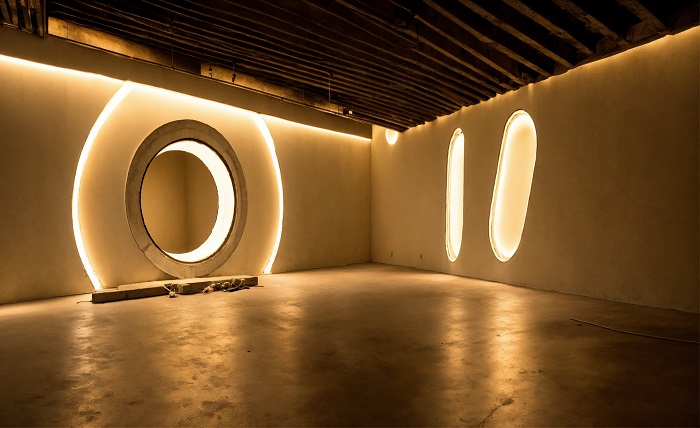How much influence do wall fixtures have on the look and feel of a space? The finish on a wall fixture changes appearance, feel, durability, and how well it suits different settings. Those who shop for pieces like contemporary wall lights quickly notice that finish can make or break the overall impression of a room. Let’s explore the major finish types and what each one offers.
Brushed Metal Finish
Brushed metal finish uses fine abrasives to produce very small parallel lines across metal surfaces. That texture softens glare and reduces the visibility of fingerprints or smudges. Designers often favor premium pieces from Visual Comfort contemporary wall lights, for instance, since this finish works beautifully in warm interiors, reflecting less light and offering an elegant, muted sheen. It works well on stainless steel, nickel, or aluminum fixtures when an understated effect is preferred.
Brushed nickel is one popular variant in this category. It has softer grey tones and pairs nicely with cool color palettes. Bronze or brass brushed finishes lean warmer and bring a hint of tradition or rustic feel. People who want subtle surfaces appreciate how this finish ages with grace and hides small wear marks.
Polished or Mirror-like Finish
Polished finishes deliver a mirror effect that catches light and draws attention. Chrome, polished nickel, or highly buffed brass fall into this group. These options can visually enlarge smaller spaces by bouncing light around the room. They make fixtures appear sharper and more formal.
The drawback is that polished surfaces need frequent care. Smudges, water spots, and scratches show more easily on a glossy surface. Polished finishes suit areas such as baths or hallways where striking contrast or brightness is the goal. In modern or minimal decor schemes, the bold visual impact of polished metals pairs beautifully with crisp lines and reflective surfaces.
Matte and Satin Finish
Matte and satin finishes offer little to no sheen and avoid harsh reflections. Satin sits between matte and polished: soft luster without full gloss. These finishes create a subtle elegance and fit well in living rooms, bedrooms, or spaces meant for relaxation. They help fixtures blend naturally with other design elements.
Matte black, flat white, or soft grey options often fall into this group. They conceal surface imperfections more effectively than glossy counterparts. Satin brass or satin nickel offers warmth or neutrality without dominating a décor scheme. Anyone seeking a balanced and calm atmosphere will find considerable value in matte or satin wall sconce finishes.
Antique and Aged Finishes
Antique or aged finishes mimic natural wear from time: patina, slight blemishes, variation in tone. Oil-rubbed bronze, aged brass, or weathered copper are common examples. These finishes add character and depth to a fixture. They work beautifully in interiors that highlight texture, heritage, or vintage pieces.
They also conceal minor damage better than polished surfaces. The softness of aged tones helps create visual layers across a room. In spaces with wood, brick, or stone elements, these finishes tie together rustic or traditional accents. When an authentic period look is the goal, aged finishes deliver charm and a sense of permanence.
Two-Tone and Mixed Metal Finish
Mixed metal finish or two-tone finish combines two different metals or metal tones in one fixture. For example, a fixture might feature a brushed brass arm paired with a matte black shade. This combination allows more flexibility when coordinating other design features like hardware or cabinet pulls. Mixed finish fixtures add a focal point without overwhelming the room.
Here are the benefits of two-tone and mixed metal finishes:
- Contrast between metals adds visual interest and depth.
- Ability to coordinate with different accent pieces, such as faucets or frames.
- Greater forgiveness when décor changes over time.
- Higher impact in spaces where a single metal might feel flat.
This finish style often works well in transitional interiors, where traditional and modern elements meet. It turns simple designs into more distinctive statement pieces through deliberate contrast.
Powder-Coated and Painted Finish
Powder-coated or painted finishes involve a protective layer applied to metal or other base materials. These finishes allow a wide variety: matte, gloss, semi-gloss, or even textured possibilities. Painted shades make bold color statements, such as deep navy, forest green, or crisp white. They also add protection against rust and help fixtures endure in moisture-prone spaces.
Durability depends on the quality of coating and surface preparation. Scratches or chips in painted finishes can reveal underlying metal, so quality control is key. Powder-coated finishes often resist moisture and peeling better than regular paint. They are especially helpful for bathrooms, laundry rooms, or exterior areas where conditions are less forgiving.
Designer lights and fixture companies such as Visual Comfort contemporary wall lights illustrate why finish variety matters: they offer options that suit both practical and aesthetic needs. Finish options for wall lights deserve attention because they shape the mood, durability and harmony within any room. With a thoughtful approach to finish selection, every wall fixture becomes a design feature that supports the room’s overall appeal.
